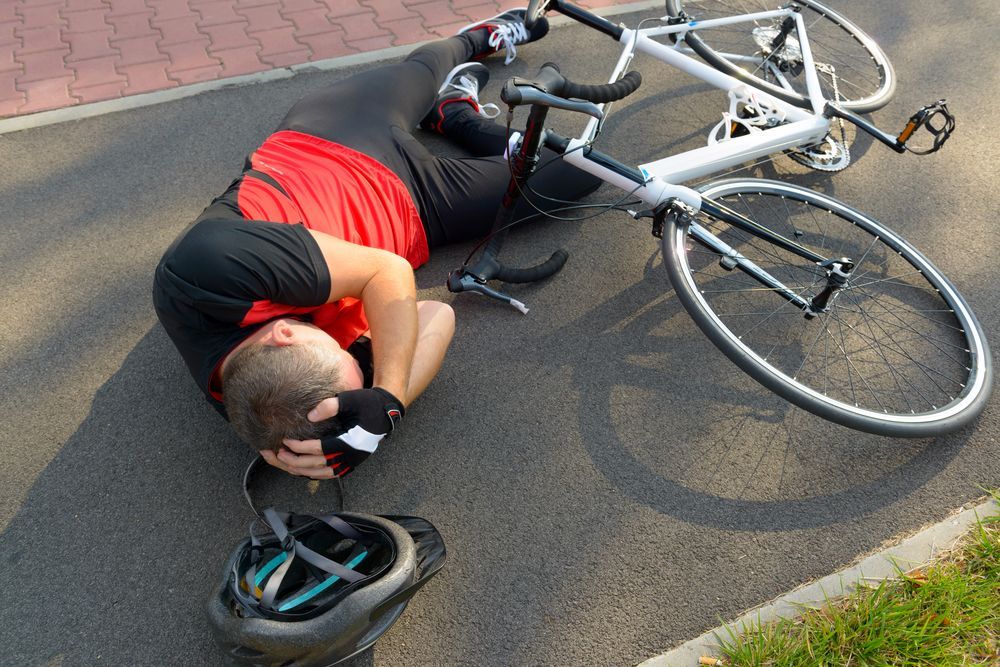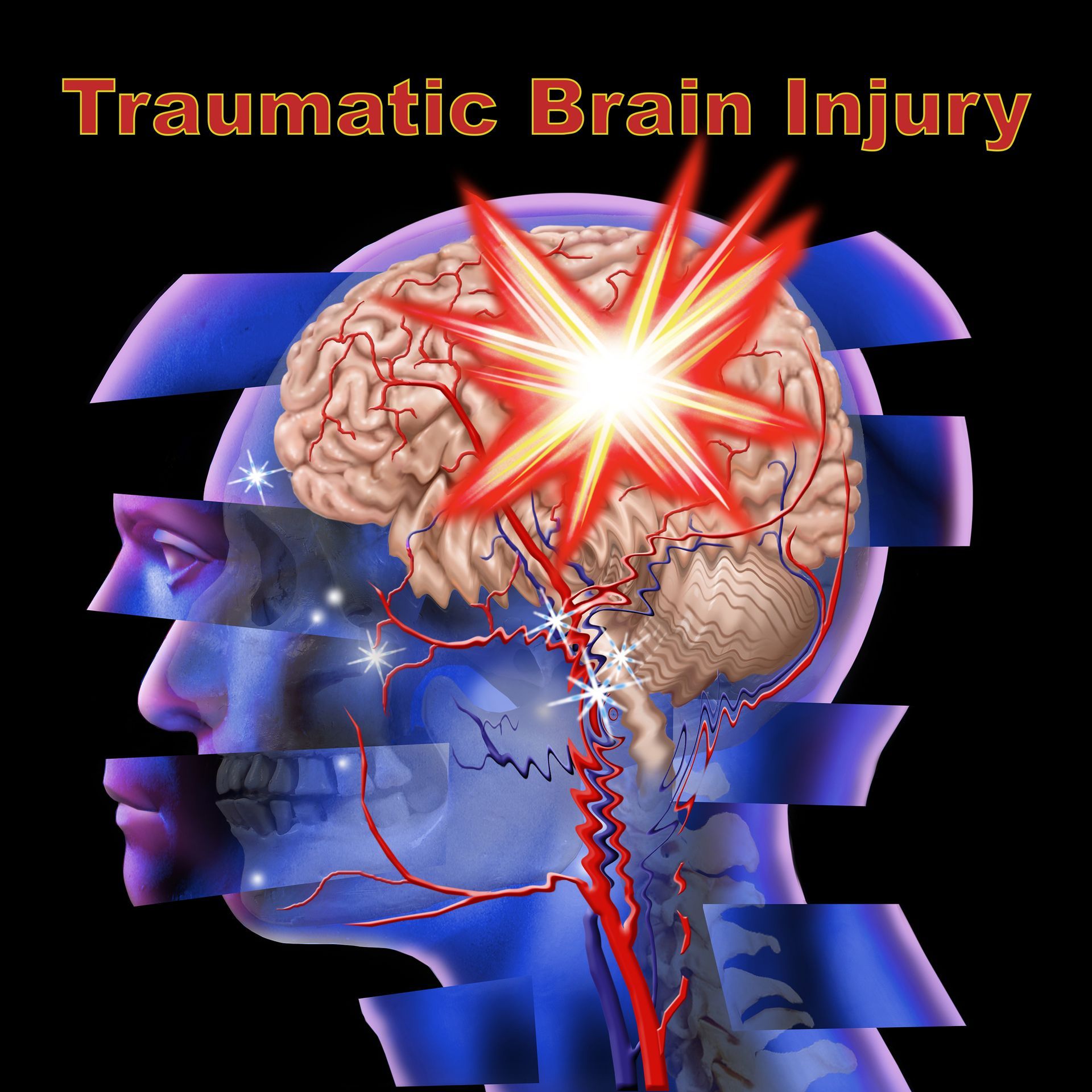How Bicycle Accidents Can Lead To Traumatic Brain Injuries
Follow us on
social media!
How Bicycle Accidents Can Lead To Traumatic Brain Injuries

Bicycling is a beautiful way to stay active, commute, and explore the world. The wind in your hair, the thrill of pedaling along open roads or peaceful trails—it's a liberating experience. However, as with any mode of transportation, accidents can happen, and the consequences can be severe. In particular, bicycle accidents can potentially lead to traumatic brain injuries (TBIs), which can have long-lasting and life-altering effects.
In this blog, we will delve into the connection between bicycle accidents and traumatic brain injuries, shedding light on the importance of bicycle safety and the need for increased awareness. Additionally, we will explore the nature of TBIs, the factors contributing to bicycle accidents, the role of helmets in preventing injuries, and the legal considerations for victims.
By understanding the risks and taking proactive measures, we can help ensure a safer and more enjoyable cycling experience for everyone.
What Is Traumatic Brain Injury?
Traumatic brain injuries (TBIs) are head injuries that result from a sudden impact or jolt to the head, causing damage to the brain. Hence, understanding the different types of TBIs is crucial to grasp the varying degrees of severity and their potential impact on an individual's life.
Concussion
The most common type of TBI, a concussion, occurs when there's a severe shake to the brain inside the skull, often due to a sudden blow or impact. Concussion symptoms can include:
- Temporary loss of consciousness
- Confusion
- Dizziness
- And memory problems
Contusion
A contusion refers to a bruise on the brain, typically caused by a direct impact on the head. In addition, contusions can lead to localized brain damage and may require surgical intervention in severe cases.
Diffuse Axonal Injury (DAI)
DAI occurs when the brain rapidly shifts or rotates within the skull, causing widespread damage to nerve fibers. Further, this injury often results from high-speed impacts or severe shakings, such as car accidents or violent falls.
Other Head Injuries
Skull Fractures
Even though our bones are solid, some bicycle crashes and accidents can still cause skull fractures. When a strong force hits the head, the skull can break and form cracks. Skull fractures can severely affect a person's health and overall well-being.
Hematoma
For nearly 40 percent of people who have a head injury, there is a high chance of developing a condition called intracranial hematoma. This means brain bleeds or blood may pool inside or on the brain, which can be dangerous and even life-threatening.
Maxillofacial Trauma
When accidents happen while riding bicycles, injuries to the head can occur, which may include fractures in different parts of the face. These fractures can affect eye sockets, cheekbones, jaw, forehead, and nose.
Common Symptoms of a Head Injury
The effects of a head injury can vary widely depending on the severity and location of the damage. And may manifest in physical, cognitive, and emotional symptoms.
Physical symptoms may include:
- Headaches
- Dizziness
- Nausea
- Coordination difficulties
Cognitive effects can involve:
- Memory loss
- Difficulty concentrating
- Impaired judgment
Emotional and behavioral changes, such as mood swings, anxiety, and depression, are common. Moreover, severe TBIs can result in permanent disabilities, affecting a person's ability to perform daily activities and impacting their overall quality of life.
The Connection Between Bicycle Accidents & Traumatic Brain Injuries

According to the Centers for Disease Control (CDC), "Bicycling leads to the highest number of sport and bicycle-related ED visits for traumatic brain injuries (TBIs) in the United States." Moreover, an estimated 596,972 visits to the emergency room were reported in the United States between 2009 and 2018.
With such an alarming number of bicycle accident head injuries being reported, assessing what's causing it is vital.
The Design of the Bicycle
Bicycle riding is a great sport. But, its exposed design puts cyclists at more risk of injuries than any other vehicle. And this vulnerability to bicycle injuries underscores the critical need for a deeper understanding of bicycle safety and the potential for traumatic brain injuries (TBIs) resulting from bicycle accidents.
Increased Use of Bicycles on the Roadways
Bicycles have gained enormous popularity among adults who now use them to commute to work. However, using bicycles on heavy-traffic roadways makes a cyclist more susceptible to bicycle accidents and resulting head injuries.
Helmet Use
We've discussed that a bicycle is an exposed vehicle and puts you at more risk of head injuries just by how it's designed. For the same reason, it is recommended by the Centers for Disease Control (CDC) that cyclists wear helmets to prevent head injuries.
Factors That Contribute to Bicycle Accidents
Bicycle accidents are the number one cause of traumatic brain injuries, and it is essential to understand why they occur. Therefore, by examining the common causes, we can gain valuable insights into improving bicycle safety.
Let's assess some of the primary factors contributing to bicycle accidents:
Negligent Motorists
One significant factor contributing to bicycle accidents is the negligence of motorists. This negligence manifests in various ways, like:
- Lack of awareness of cyclists sharing the road
- Failure to yield the right of way
- Distracted driving
- Speeding
Poorly Designed Road Infrastructure
The design of roads can also contribute to bicycle accidents. For instance, inadequate cycling infrastructure like:
- Lack of dedicated bike lanes
- Absence of proper road signs
- Uneven road surfaces
Inadequate Safety Measures by Cyclists
While motorists are responsible for bicycle accidents, cyclists can contribute to accidents through inadequate safety precautions. Factors include:
- Lack of protective gear, such as helmets or reflective clothing
- Disregarding traffic laws
- Cycling in poor visibility due to insufficient lighting
Steps to Take After a Head Injury
Head injuries in bicycle-related accidents can result in life-threatening traumatic brain injuries. TBIs like concussions and contusions don't usually show symptoms immediately, so taking immediate and appropriate steps to ensure your well-being and aid in your recovery is crucial. Here are the essential steps to take after a bicycle-related head injury:
Seek Immediate Medical Attention
Regardless of the severity of the head injury, it is important to seek medical attention immediately. Some head injuries may have hidden complications or delayed symptoms. Seeing a doctor immediately will help assess the extent of the damage and provide necessary treatment or guidance for further care.
Rest & Monitor Symptoms
Following a head injury, it is crucial to allow yourself adequate rest. Monitor your symptoms closely, including headache, dizziness, confusion, nausea, difficulty balancing, or changes in vision or speech. If symptoms worsen or new ones arise, seek immediate medical attention.
Document & Report the Accident
Record the accident details, including the date, time, location, and any factors contributing to the incident. Furthermore, depending on the circumstances, report the bicycle accident to the appropriate authorities. This step is crucial if the accident involves a motor vehicle or if there are potential legal implications of a bicycle crash.
Consider Legal and Insurance Options
If the bicycle accident resulted from the negligence of a motor vehicle driver, it might be necessary to consult with a bicycle accident law firm so that they can guide you on potential compensation and insurance claims to cover medical expenses, lost wages, and other damages.
Prevent Traumatic Brain Injuries Resulting From Bicycle Accidents
Taking proactive measures to prevent TBIs is crucial for protecting cyclists from severe head and neck injuries. Hence, here are important strategies to prevent traumatic brain injuries resulting from bicycle accidents:
Wear a Helmet
The most effective way to protect the head and prevent TBIs while cycling is by wearing a properly fitted helmet. Helmets act as a vital barrier, absorbing impact and reducing the risk of severe head injuries.
Obey Traffic Laws & Signals
Adhering to traffic laws and signals is essential for maintaining a safe cycling environment. Obey traffic rules, such as stopping at red lights and stop signs, yielding to pedestrians and vehicles when necessary, and using hand signals for turns. Lastly, respect other road users and maintain awareness of your surroundings to minimize the risk of accidents that could lead to traumatic brain injuries.
Be Visible
Enhance your visibility to motorists by wearing bright and reflective clothing, especially during low-light conditions. Additionally, use lights and reflectors on your bicycle to ensure others easily see you on the road.
Other measures you can take are:
- Maintain your bicycle and repair any mechanical failures
- Be mindful of road hazards
- Enhance cycling skills
Seeking Legal Assistance After a Traumatic Brain Injury
If you have been involved in a bicycle accident resulting in injuries, seeking legal assistance from a bicycle accident lawyer is equally important to protect your rights and pursue justice. Additionally, consulting with an experienced attorney who specializes in bicycle accidents can provide valuable guidance and support throughout the legal process.
One of the primary objectives of pursuing a legal claim after a bicycle accident is to recover compensation for your medical expenses, lost wages, pain and suffering, and other damages. In addition, if the bicycle accident resulted in a permanent disability, disfigurement, or significant emotional distress, your attorney may also pursue compensation for long-term care, diminished quality of life, and the psychological toll of the accident.
Consider Bike Legal for Your Bicycle Accident Claim
Experiencing head injuries like a traumatic brain injury from a bicycle accident is challenging and life-altering indeed. At Bike Legal, we recognize the immense impact these injuries can have on your physical well-being, emotions, and financial stability.
With our team of skilled bicycle accident lawyers, we are committed to tirelessly advocating for your rights. Our top priority is holding the responsible parties accountable and seeking the justice and fair compensation you deserve. So, contact us today at 877-245-3534 to take the first step toward justice.
Frequently Asked Questions
Which Kind of Injuries Are the Most Fatal in Bicycle Accidents?
Head injuries are the most fatal kind of bicycle accident injuries because of their debilitating effects on cyclists. Head trauma can result in traumatic brain injury, skull fracture; brain bleeds, and other severe injuries that can affect normal brain functions.
What Are the 3 Causes of Traumatic Brain Injury?
The three leading causes of TBIs are bike collisions, falls, or being struck by or against a hard object. TBIs are also the leading cause of bicycle-related deaths in the United States.
Can a Bicycle Accident Cause Brain Damage?
In severe cases, catastrophic head trauma can cause brain damage and lead to permanent disabilities. Furthermore, cycling accidents are the most common cause of head injury in the United States, according to the American Association of Neurological Surgeons.

